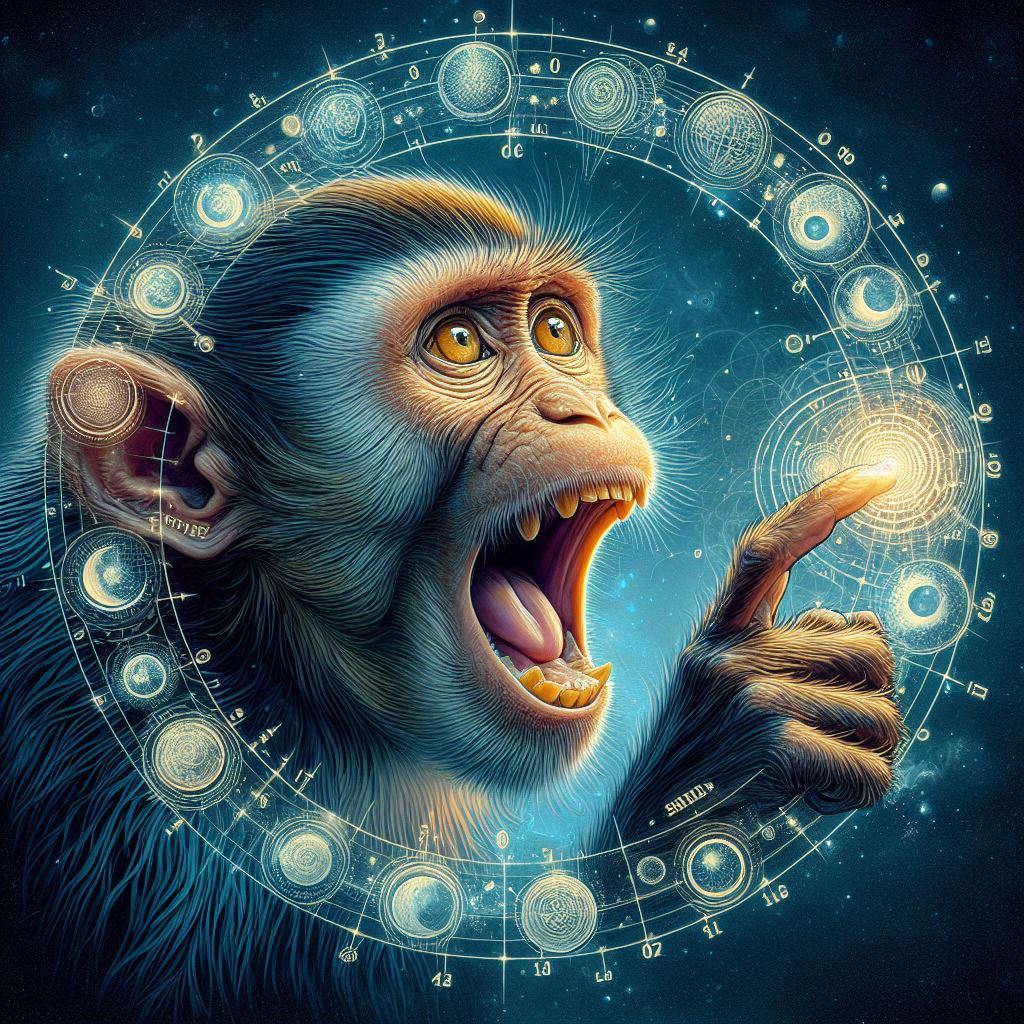
How Monkeys Communicate: Understanding Their Sounds & Gestures
Share
How Monkeys Communicate: Understanding Their Sounds & Gestures
Monkeys, with their diverse species and habitats, have developed sophisticated ways to communicate with each other. Through sounds, facial expressions, body language, and gestures, these primates convey essential information to maintain social bonds, warn of danger, or attract a mate. Understanding how monkeys communicate not only gives us a deeper insight into their behavior but also reveals the complexity of their social structures and interactions. Let’s explore the fascinating world of monkey communication!
The Language of Sounds: Vocal Communication
Monkeys are highly vocal animals, and their sounds serve various purposes. These vocalizations can indicate emotions, announce the presence of predators, or help them coordinate movements within their group. Let’s break down the different types of sounds monkeys use:
1. Alarm Calls
When a monkey senses danger, it emits alarm calls to warn other members of the group. These calls vary in tone and pitch depending on the level of threat. For example, a sharp, high-pitched scream may signal the presence of a predator, while a lower, more guttural sound might indicate the approach of a human or another non-predatory threat. Alarm calls are crucial for the survival of the troop, giving them time to flee or take cover.
2. Coos and Whistles
Monkeys, especially species like the macaques and capuchins, often make softer cooing sounds or whistles to communicate with family members. These sounds can express contentment, comfort, or even a desire to groom. These subtle vocalizations help maintain harmony within the group and are essential for bonding.
3. Grunts and Growls
Grunts, growls, and low-frequency vocalizations are often used during aggressive encounters or disputes. These sounds convey a sense of dominance or territorial defense, particularly when males compete for resources or mates. Such vocalizations play a role in establishing hierarchies within monkey troops, signaling strength and power.
4. Mating Calls
Mating calls are used by males to attract females. These calls can vary in pitch and duration depending on the species. For example, howler monkeys are known for their loud, guttural howls that can be heard from miles away, marking their territory and signaling their presence to females.
Non-Vocal Communication: Gestures and Body Language
While vocal communication is essential, much of monkey communication relies on gestures and body language. Monkeys are masters of non-verbal cues, and understanding these movements can reveal their emotions and social status. Here are some key gestures used in monkey communication:
1. Facial Expressions
Monkeys use facial expressions to convey a range of emotions, from happiness to aggression. A relaxed face with a slight smile can indicate a friendly mood, while a bared-teeth display may signal aggression or dominance. The position of their eyebrows, the openness of their eyes, and the shape of their mouth can all convey subtle emotional messages.
2. Grooming
Grooming is one of the most important non-verbal communication methods in monkeys. It’s not just about cleanliness; grooming is a way to strengthen social bonds. When a monkey grooms another, it’s a gesture of trust and friendship. Grooming can also be a sign of submission, particularly if a lower-ranking monkey grooms a dominant individual.
3. Posture
The posture of a monkey can reveal its mood and intentions. A relaxed posture with arms hanging loosely indicates calmness, while an upright, tense posture with puffed-out chest signals dominance or readiness to fight. When monkeys are scared, they may crouch or make themselves appear smaller to avoid confrontation.
4. Tail Movements
For monkeys with prehensile tails, such as spider monkeys, the tail is an important communication tool. The tail can express excitement, curiosity, or even aggression. A tail held stiffly in a certain direction may indicate alertness, while a relaxed tail suggests calmness.
The Role of Communication in Monkey Social Structure
Monkeys are incredibly social animals, and effective communication is essential for maintaining harmony within their groups. In many species, monkeys live in complex social hierarchies where clear communication helps to prevent conflict and establish order. The alpha male or female, for instance, often uses vocalizations and body language to maintain their position at the top of the hierarchy.
Additionally, monkeys rely on vocalizations and gestures to coordinate activities such as foraging, moving through their habitat, and protecting one another from predators. Communication is the backbone of their survival in the wild.
Communication in Different Monkey Species
Different species of monkeys have developed unique communication methods suited to their environment and social structure. For example:
• Howler Monkeys: Known for their loud howls, howler monkeys use their vocalizations to announce their presence and defend their territory.
• Capuchin Monkeys: These highly intelligent monkeys use a wide range of sounds, including whistles and coos, and are known for their use of gestures to communicate with each other.
• Macaques: Macaques are known for their complex social structures and often use both vocalizations and facial expressions to manage group dynamics and resolve conflicts.
Fun Facts About Monkey Communication
• Monkeys Have Different Dialects: Just like humans, monkeys from different regions or groups may have distinct vocalizations. This shows how communication evolves based on environmental factors.
• Silent Communication: Some monkeys, like the titi monkeys, use tail entwining as a form of silent communication, showing affection or solidifying bonds.
• Monkeys Can Learn Sign Language: Some species of monkeys, particularly chimpanzees and gorillas, have been taught sign language and can communicate with humans using symbols.
The Importance of Understanding Monkey Communication
Understanding how monkeys communicate provides valuable insights into their behavior, social interactions, and cognitive abilities. It can help conservationists protect these incredible creatures by fostering better human-animal interactions, improving captive care, and preserving their natural habitats. By continuing to study their sounds and gestures, we deepen our understanding of primates and ensure a future where they thrive in the wild.
Want to learn more about animal behaviors and fun facts? Check out:
